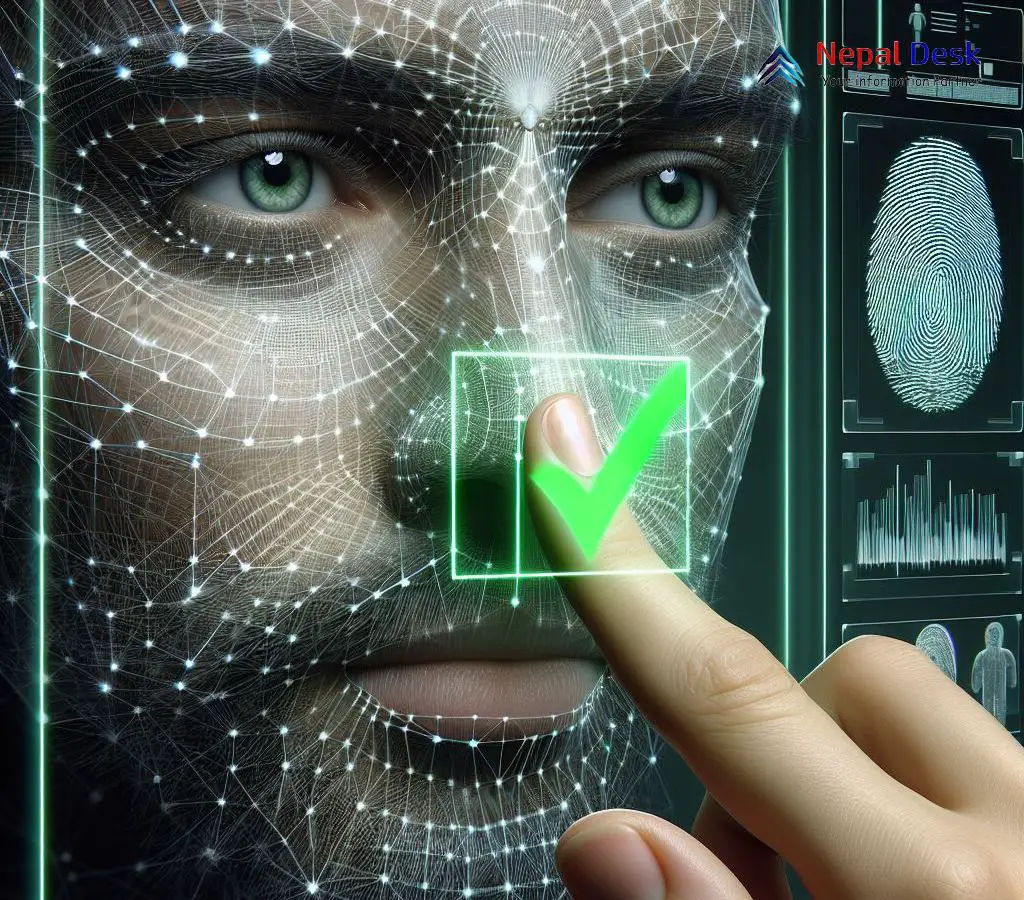Nepal Considers Unified Biometrics for Passport Issuance
Published Date

Published Date
Nepal explores passport modernization, contemplating a shift to unified biometrics from existing databases, aiming for efficiency and global compliance.
⏱ 5 min read
The Nepalese government has announced plans to streamline the country's passport issuance process by utilizing existing biometric databases instead of collecting new biometrics from applicants.
Authorities stated they would issue passports using the same biometric data from national identity cards and civil registration systems, avoiding duplication. Currently, passport applicants must submit biometrics again even if already captured for mandatory national ID registration prerequisite for travel documents.
The proposed unified biometric approach was discussed during a recent meeting between Prime Minister Pushpa Kamal Dahal and several high-ranking ministers. They assessed recommendations from the Department of Passports to cross-reference current databases when processing passport requests.
Officials cited this policy shift will increase efficiency and align with global best practices by tapping into biometrics previously gathered across identification programs. Critics have questioned similar redundancy issues in India, and Nigeria regarding separate collection of fingerprints, iris scans, or facial images for unrelated verification purposes after people enrolled in digital ID schemes.
Proponents argue employing existing biometric credentials cuts applicant inconvenience while optimizing state resources instead of sustaining parallel systems. As Nepal continues expanding digital governance frameworks, avoiding duplication by enabling appropriate data sharing between critical services boosts cost-effectiveness and user experience if balanced against privacy protections, experts contend.
With passport modernization efforts underway, leveraging current investments in unique identity management for streamlined travel documentation strengthens the country’s digital transformation.
What is Biometrics?
Biometrics refers to technology-driven identification and authentication techniques that leverage an individual's unique physical attributes or behavioral patterns. These measurable human characteristics serve as distinctive personal markers that can be digitally collected and assessed against other records to reliably confirm or establish an identity in a given context.
Unlike conventional methods involving passwords, PINs, identity cards, or other credentials that can be misplaced, forgotten, or manipulated - the data derived from biological or behavioral properties offers more robust and convenient identity/access management.
Examples of Common Biometric Identifiers:
- Fingerprint Scans: It record friction ridge arrangements on fingertips as complex graphical maps containing distinctive information useful for precise individual recognition. Global fingerprint scanning constitutes the most ubiquitous mainstream biometric modality.
- Iris imaging: It accurately captures intricate details within the colored ring structure surrounding the pupil using specialized high-resolution cameras. The visual signature encoded offers precise personal identification similar to fingerprints.
- Facial Recognition: It relies on capturing key facial attributes via image analysis software to generate distinctive mathematical maps that enable matching individual faces from databases or live video feeds during authentication events.
- Voice Recognition: It utilizes various speech characteristics like tone, frequency, and pronunciation style extracted from audio samples provided by speakers to produce person-specific voiceprints. These can confirm identities by comparison during the verification stages.
In summary, mapping unique biological or characteristic patterns allows for establishing the identity with far greater accuracy over prevailing token or knowledge-based systems. Biometric-driven recognition hence majorly enhances security, trust, and convenience for identity confirmation within proper ethical and regulatory provisions given proper implementation.
Benefits of Biometrics
- Precision - Biometric authentication leverages distinctive individual traits for accurate identification and reduced errors unmatched by legacy approaches.
- Security - Unique personalized attributes like fingerprints and iris scans are nearly impossible to falsify or replicate, deterring identity fraud.
- Convenience - Presenting a fingerprint or facial scan expedites verification unlike memorizing complex passwords or locating smart cards.
- No Sensitive Data Memorization - Users avoid having to recall passwords, codes, or PINs that could be forgotten, stolen, or require periodic resets.
Drawbacks of Biometrics
- Costs - Acquisition, integration, and maintenance of biometric hardware and software necessitate substantial capital expenditure.
- Privacy Apprehensions - Collection and storage of intimate human data traits raises ethical alerts about potential misuse requiring legal safeguards.
- Technological Limitations - Sensor glitches, skin damage, or environmental interference contribute to false rejections inconveniencing users. Backup overrides provide fail-safes.
In conclusion, while biometrics delivers next-generation accuracy, security, and convenience for digital identity confirmation, managing adoption costs, data privacy and technological reliability remain vital for smoothly unlocking its societal advantages through sustainable implementations.
Biometrics: Use in Nepal
Biometrics are increasingly being used in Nepal for various purposes, including:
- National ID cards - In 2016, the government initiated a biometrics-based national ID card program for all citizens, replacing old paper-based citizenship certificates. Millions of Nepalis have enrolled in fingerprints, facial images, and iris scans that help confirm beneficiaries for welfare schemes.
- Voter registry - During the 2017 elections, voter lists were updated using biometrics to de-duplicate rolls and issue fraud-proof voter IDs, improving credibility. This helped consolidate Nepal's democratic transition after the civil war and monarchy dissolution.
- Passports - As discussed previously, Nepali passports are also transitioning towards the inclusion of biometric data replacing manual checks to meet international travel document standards, improve security, and beat forgery.
- Banking services - Various Nepali banks have adopted iris recognition and fingerprint authentication technologies to verify account holders for reducing banking frauds and offering cardless secure transactions leveraging biometrics.
- Law enforcement - Nepali police have pioneered automated fingerprint identification systems with digital databases helping identify criminals based on latent prints recovered from crime scenes, improving efficiency.
- Border control - Trial deployments utilize facial recognition to automate border checkpost visitor identification, although still nascent. When expanded appropriately, such systems would strengthen immigration security and efficiency.
- Attendance Management - Some companies and organizations in Nepal are using fingerprint scanners or facial recognition systems for employee attendance management. This helps to improve accuracy and efficiency in tracking employee work hours.
In summary, biometrics are being harnessed to counter identity threats and enhance access or entitlement delivery across various public and private sector systems in Nepal. Standards, interoperability, and reviews would further maximize its advantages.
